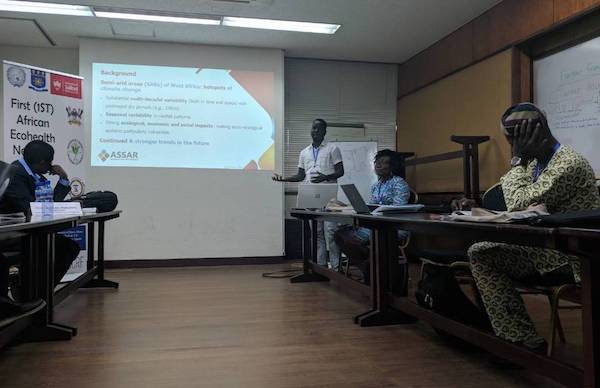Alcade Segnon, a Ph.D. student with the Adaptation at Scale in Semi-Arid Regions (ASSAR) program, had the opportunity to present on his research relating to “Multidimensional household vulnerability assessment in semi-arid areas of Mali” at the 6th International Climate Change and Population Conference on Africa (CCPOP 2018), 23-25 July at the University of Ghana. This conference is organized by the University’s Regional Institute of Population Studies (RIPS) and focuses on bringing together ideas and lessons from scientists across the globe to benefit the African continent.
Alcade’s presentation highlighted his work with colleagues from the University of Ghana’s Institute for Environment and Sanitation Studies (IESS), the International Crops Research Institute for the Semi-Arid Tropics (ICRISAT) in Mali, and the University of Abomey-Calavi in Benin. This work elaborates on the fact that vulnerability in semi-arid regions (SARs) is not driven only by climatic factors, that other biophysical, socioeconomic, institutional and political driving forces, operating at different scales, interact to influence vulnerability. The study adopted a modified Livelihood Vulnerability Index approach which includes non-climatic dimensions and is framed within the IPCC vulnerability framework. This multidimensional approach which offers a pragmatic and flexible tool for vulnerability assessment was used to assess household vulnerability to climatic and non-climatic stressors. The analysis highlighted the diversity in household vulnerability and the context-specific nature of driving forces of vulnerability in SARs of West Africa. Failing to account for this diversity and nuanced understanding in adaptation planning may result in a mismatch between adaptation needs and interventions and poor impacts of adaptation interventions.



